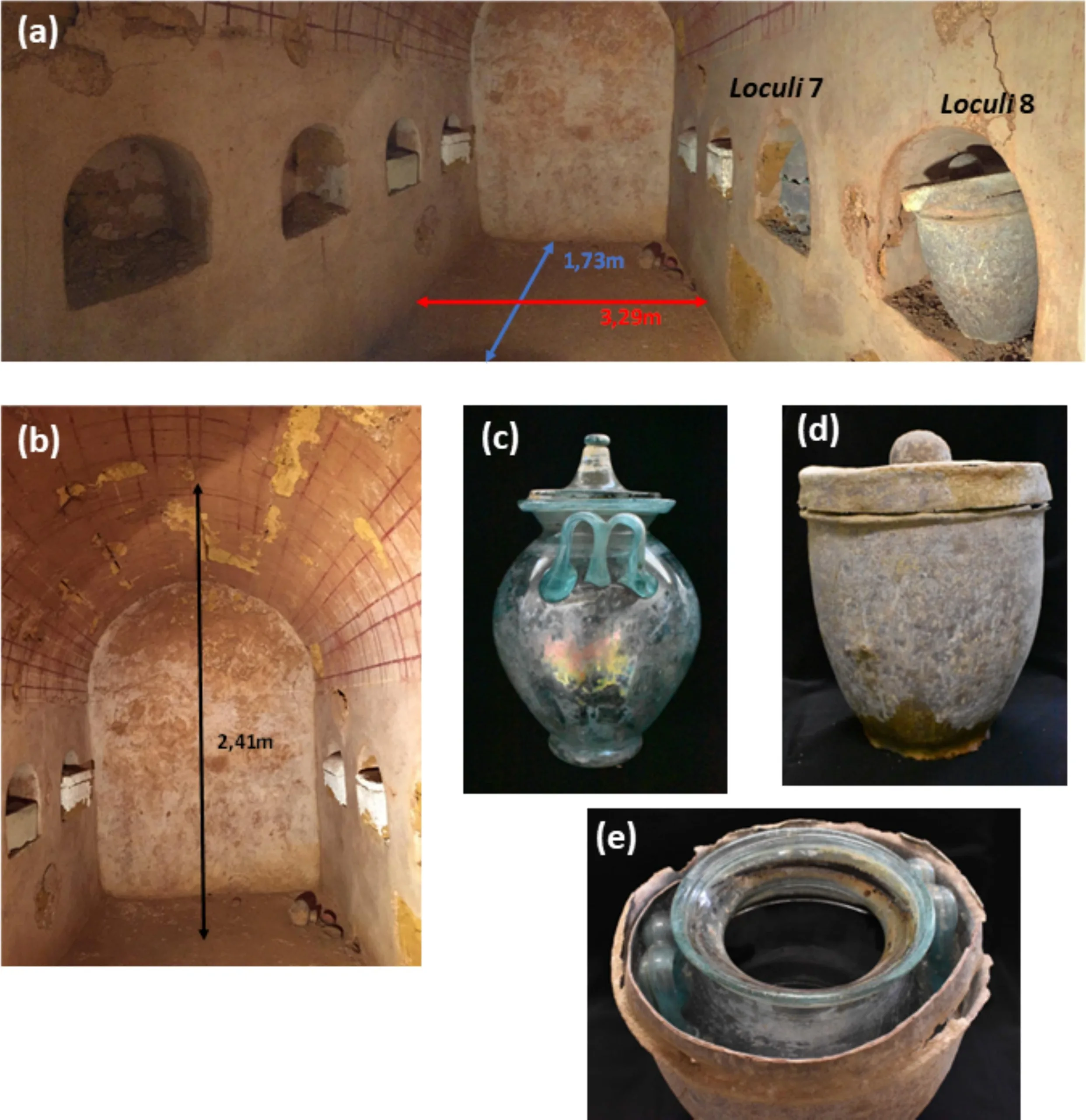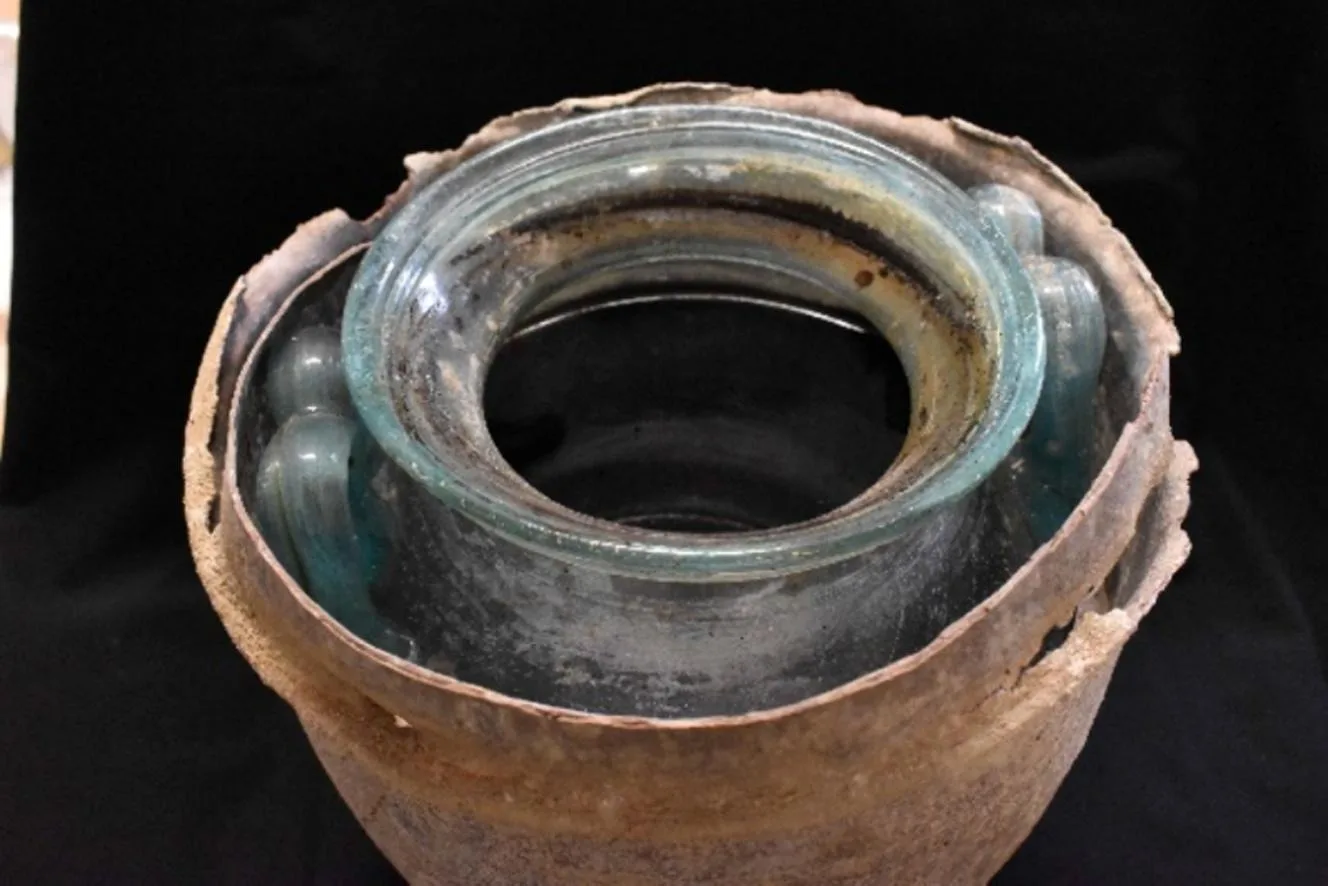Archaeologists have unearthed an urn containing a reddish liquid in a family mausoleum dating to the 1st century AD in the Carmona necropolis in Seville. An archaeochemical analysis has identified this liquid as white wine, marking it as the oldest wine preserved in liquid form.
In 2019, the Spanish urn was discovered during renovation work carried out by a family in their home in Carmona. They stumbled upon a sunken tomb on their property. The tomb dated to the early 1st century AD, featured eight niches, six of which housed cinerary urns containing cremated remains and various objects typically associated with Roman funeral rituals.
Among the eight burial niches, six contained urns made from limestone, sandstone, or glass and lead. Each urn held the cremated bone remains of a single individual, with two of the urns inscribed with the names of the deceased: Hispanae and Senicio.
The urn in Niche – 8 distinguished this discovery. Inside an oval lead box with a flat-domed lid was a glass ossuary pot with M-shaped handles. This pot contained five litres of a reddish liquid, believed to be part of the original contents along with the cremated bone remains.

(a), (b) Funeral chamber. (c) Urn in niche 8. (d) Lead case containing the urn. (e) The reddish liquid contained in the urn. Image Credit: Daniel Cosano et al.
Experts at the University of Córdoba analysed the ancient tawny liquid inside the urn. It was confirmed to be a local, sherry-like wine. José Rafael Ruiz Arrebola, an organic chemist at the University of Córdoba who led the analysis, stated, “The wine turned out to be quite similar to wines from here in Andalucía: Montilla-Moriles; sherry-type wines from Jerez, and manzanilla from Sanlúcar.”
Prior to this discovery, the oldest wine preserved in a liquid state was the Speyer wine bottle. This bottle was excavated from a Roman tomb near the German city of Speyer in 1867 and dated to approximately AD 325.
Using inductively coupled plasma mass spectrometry (ICP-MS), scientists identified the chemical components of the wine’s mineral salts, which included common elements found in old wines such as potassium, calcium, and magnesium. Additionally, they identified polyphenols—compounds present in grapes and, consequently, in wine—using high-performance liquid chromatography coupled with mass spectrometry (HPLC-MS). Researchers confirmed the liquid as white wine due to the presence of specific polyphenols and the mineral salt profile. The report is published in the Journal of Archaeological Science.
The extraordinary preservation of the wine in its liquid state testifies to the sophisticated Roman methods of preservation and storage, as well as the unique climatic conditions that have allowed its preservation for nearly two millennia.
Researchers have documented the use of wine in Roman funeral rituals extensively. They suggest that the urn, once it contained the cremated remains, must have been filled with wine as part of a libation ritual during the burial ceremony or as an element of the funeral rites intended to aid the deceased’s transition to the afterlife.
The researchers conclude that their findings strongly indicate that the reddish liquid in the ash urn was originally wine, which decomposed over time. This conclusion suggests that the wine, at about 2,000 years old, is the oldest found to date.
